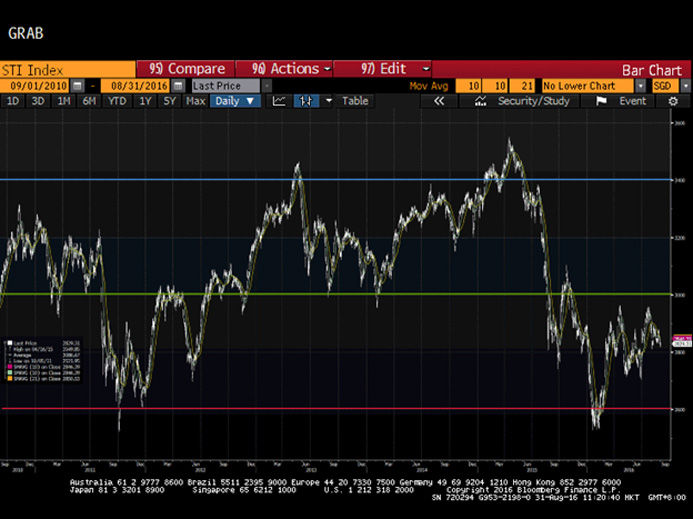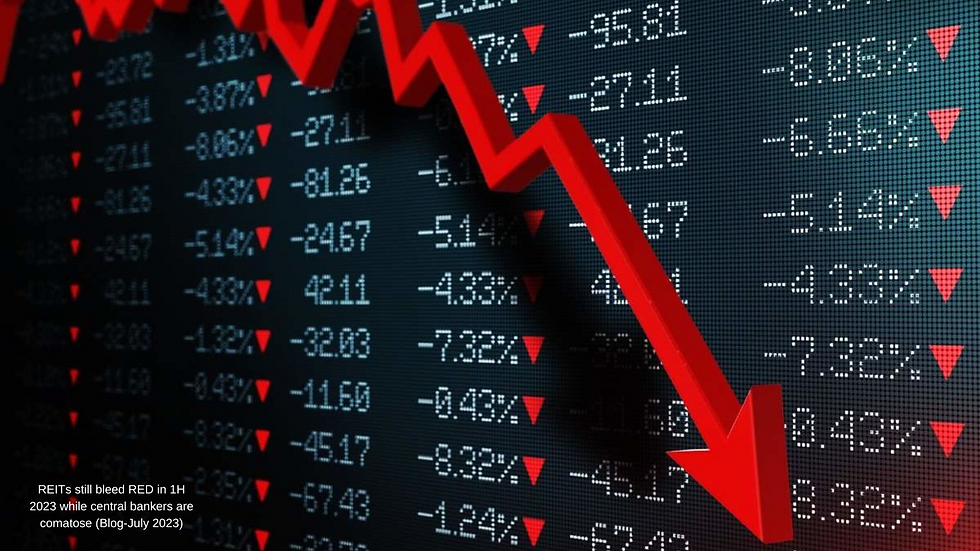VOLATILITY IS NOT THE SAME AS RISK
- by Gabriel Yap

- Nov 19, 2017
- 3 min read
09/2016-
One of the misconceptions that I have encountered in my 3 decades of lecturing in the financial field is that once markets enter a volatile period, many so-called "experts" would waste no time to warn that markets have become risky.

In my many media interviews, I have always exhort investors to embrace volatility as therein, lies the opportunity to make mega-returns.
Volatility is not the same as risk my dear Watson. Volatility is an unexpected deviation from an investor’s investment goal. It can then lead to risk or opportunity depending on whether an investor had been long or short prior to the "volatile" event.
Risk, then my dear Watson, is the probability of failing to achieve one's investor's goal.
In my years of investment experience, I would like to share a few pointers on volatility and the risk of not been able achieve one's investment goals -
Firstly, always be an anchor when markets turn volatile as it is during such times that so-called “experts” or analysts will propound the depth and width of negative events through their "worst-case" scenarios forecasts. Over the last 3 decades, most of these “worst-case” scenarios have hardly materialized other than the Global Financial Crisis in 2008.
So, do turn down the noise when the negative news flow via traditional and social media reach feverish pitch as if Armageddon is at hand. This, of course, is easier said than done to many as these are periods when investors are most prone to making emotional decisions regarding their investments and selling near low prices, together with the crowd.
Secondly, understand that risk is only one aspect of volatility – the other aspect is opportunity.
I have always greeted high levels of volatility with glee as they indicate the best opportunities. Invariably, you get the best low prices during such periods and enjoy the wide upswing when they come (yes, partly due to mean reversion behavior). And yes, the upswing can happen as fast as markets melt.
I tend to view smooth markets like now when volatility is low and investors are relaxed as boring as there is little chance of making mega-returns. I tend to spend such time in the Australian (where I have lived for 9 years now in Melbourne) wilderness trekking in the Grampians or bush walking in the Yarra Ranges. This way, I am partly shifting my focus to spend less time on reading investment reports and more time on long-term thinking and strategizing while bush walking or trekking.
Thirdly, understand that time is on your side as it smooths out short-term volatility. For example, the Singapore market, exemplified by the FTSTI had suffered a total of 9 bouts of heavy selling during the current decade. The worst periods were in beginning of 2011 during the Euro Debt Crisis when the FTSTI spiraled down 693 points and just last year again in 2015 during the August sell-off when the FTSTI crashed 674 points.
STOCKMARKET DECLINES THIS CURRENT DECADE

However, if you look at the below 10-year FTSTI chart, it is quite apparent that the Singapore market has been in a smooth side-way channel tracing 2,600 on the low side and kissing 3,400 on the high-side with a median of 3,000 points in the past 5.5 years now in the current decade. Volatility have presented me to buy on the low and sell on the high.

So has it been risky or did volatility presented opportunities for mega-returns in the past 5.5 years?
Anyone joining me for bush walking or mountain climbing in the Himalayas this month?




Comments